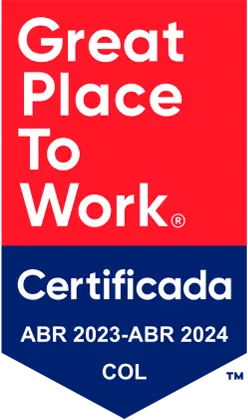FinOps es un término relativamente nuevo que se ha popularizado en la industria de la tecnología en los últimos años. Se refiere a la práctica de optimizar el uso y el costo de los recursos de tecnología de la información en una empresa. Esto incluye cosas como el alojamiento en la nube, el uso de plataformas en línea y la contratación de personal técnico.
FinOps es una disciplina y una práctica cultural, pero también se refiere a la FinOps Foundation , una organización comercial sin fines lucrativos, parte de Linux Foundation, compuesta por miembros de empresas y otras organizaciones que promueven la disciplina de FinOps.
El objetivo de FinOps es ayudar a las empresas a maximizar su rentabilidad y reducir los costos innecesarios en el uso de tecnología. Esto se logra mediante el monitoreo constante de los recursos y la implementación de prácticas sostenibles y eficientes.
Una de las principales ventajas de FinOps es que permite a las empresas adaptarse rápidamente a los cambios en el mercado y en las necesidades de la empresa. Por ejemplo, si una empresa experimenta un aumento repentino en la demanda de sus productos o servicios, puede utilizar FinOps para aumentar su capacidad de alojamiento en la nube o contratar más personal técnico de manera rápida y eficiente. Esto le permite a la empresa mantenerse competitiva y seguir siendo rentable.
Otra ventaja de FinOps es que permite a las empresas tener un mayor control sobre sus costos de tecnología. A menudo, las empresas tienen dificultades para predecir exactamente cuánto costará el uso de tecnología a largo plazo. Con FinOps, pueden monitorear constantemente el uso de los recursos y tomar medidas para reducir los costos innecesarios.

¿Quiénes son los participantes clave de FinOps?
Para implementar FinOps en una empresa, es importante tener un equipo dedicado y una cultura empresarial que apoye la eficiencia y la sostenibilidad. También es esencial contar con herramientas y tecnologías adecuadas para monitorear y optimizar el uso de los recursos de tecnología. Esto puede incluir cosas como plataformas de seguimiento de costos en la nube, herramientas de optimización de recursos y sistemas de automatización.
Los cargos varían según la organización, pero generalmente hay cinco participantes clave, de acuerdo con la definición de FinOps Foundation :
Ejecutivos. Ejecutivos como un CTO, un CIO, un CFO o un director del centro de excelencia de la nube se centran en proyectos de TI complejos y a gran escala, fomentan la responsabilidad y la transparencia y se aseguran de que los equipos se ciñan a los presupuestos.
Propietario del producto/negocio. Por lo general, los miembros del equipo del propietario del producto o negocio, como el director de optimización de la nube, el analista de la nube o el responsable de operaciones de negocio, son responsables de traer nuevos productos y funciones al mercado y acelerar el crecimiento del producto año tras año. Los propietarios de producto suelen ser participantes fundamentales en la automatización de la infraestructura de nube.
Ingeniería y operaciones. Ingenieros de software y sistemas, arquitectos de la nube, gestores de prestación de servicio y otros miembros del equipo de ingeniería y operaciones ayudan a acelerar la prestación de servicios de alta calidad, al tiempo que mantienen el flujo de las operaciones de negocio. Para plasmar esto en un modelo operativo de FinOps efectivo, estos equipos trabajan juntos para establecer prácticas de responsabilidad en los equipos de ingeniería, e identificar anomalías, reducciones de tarifa y áreas para evitar costes de manera que la prestación de aplicaciones y servicios sea más rentable.
Finanzas/ aprovisionamiento. Los miembros del equipo de finanzas y aprovisionamiento utilizan la información que facilita el equipo de FinOps para negociar los contratos más favorables, poner en práctica programas de descuento y compromiso de volumen, y crear presupuestos, previsiones e informes de costes de la nube.
Profesional de FinOps. Los profesionales de FinOps lideran el cambio cultural necesario para lograr el éxito de FinOps, uniendo a los equipos de negocio, TI y finanzas para optimizar el uso de la nube e incrementar el valor empresarial. Aplicando sus conocimientos del marco de FinOps, sus principios y prestaciones, se centran en establecer una cultura de FinOps, educar a la organización sobre las mejores prácticas, establecer puntos de referencia, crear visibilidad en torno a los costes de la nube y orientar presupuestos y previsiones.
¿Por qué necesita la elaboración de informes y la automatización en FinOps?
Para lograr el máximo beneficio, las prácticas de FinOps deben impulsar tanto la elaboración de informes como la automatización en sus operaciones en la nube. Según FinOps Foundation, la elaboración de informes avanzada permite asignar más del 90 % del gasto en la nube con muy poca varianza entre el gasto previsto y el gasto real. Los informes maduros de FinOps también requieren que una organización cuente con indicadores clave de rendimiento (KPI) específicos definidos como mediciones de éxito.
Al combinar la elaboración de informes avanzada con automatización, las organizaciones pueden aumentar el ROI de las inversiones en la nube identificando continuamente oportunidades de eficiencia y tomando medidas para optimizar la nube en tiempo real. Además, las organizaciones pueden aprovechar la optimización basada en métricas mediante la automatización de recursos dinámicos para que la infraestructura subyacente de un entorno en la nube siempre tenga recursos para cumplir con los objetivos de nivel de servicio.
Las operaciones de la nube que aplican tanto la automatización como la elaboración de informes avanzada aseguran experiencias digitales óptimas para el usuario final, además de reducir el gasto en la nube.
En resumen, FinOps es un enfoque centrado en la optimización de los costos financieros en la empresa y en la maximización de la rentabilidad a través del uso de técnicas y herramientas de análisis financiero y la implementación de procesos y sistemas adecuados para la gestión de los recursos financieros. Es especialmente relevante en el contexto de las empresas tecnológicas y de software donde los costos pueden ser muy volátiles y difíciles de predecir. En estos casos, la implementación de un enfoque de FinOps puede ayudar a las empresas a optimizar sus costos y aumentar su rentabilidad a largo plazo.



